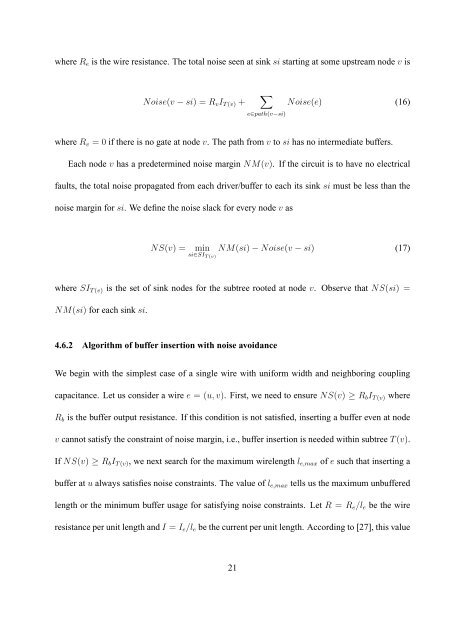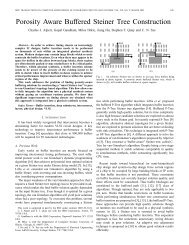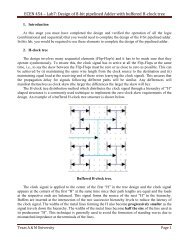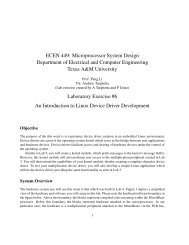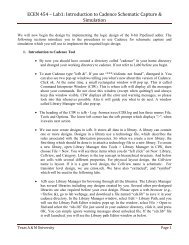Buffer Insertion Basics - Computer Engineering & Systems Group ...
Buffer Insertion Basics - Computer Engineering & Systems Group ...
Buffer Insertion Basics - Computer Engineering & Systems Group ...
Create successful ePaper yourself
Turn your PDF publications into a flip-book with our unique Google optimized e-Paper software.
where R e is the wire resistance. The total noise seen at sink si starting at some upstream node v is<br />
∑<br />
Noise(v − si) = R v I T(v) + Noise(e) (16)<br />
e∈path(v−si)<br />
where R v = 0 if there is no gate at node v. The path from v to si has no intermediate buffers.<br />
Each node v has a predetermined noise margin NM(v). If the circuit is to have no electrical<br />
faults, the total noise propagated from each driver/buffer to each its sink si must be less than the<br />
noise margin for si. We define the noise slack for every node v as<br />
NS(v) =<br />
min NM(si) − Noise(v − si) (17)<br />
si∈SI T(v)<br />
where SI T(v) is the set of sink nodes for the subtree rooted at node v. Observe that NS(si) =<br />
NM(si) for each sink si.<br />
4.6.2 Algorithm of buffer insertion with noise avoidance<br />
We begin with the simplest case of a single wire with uniform width and neighboring coupling<br />
capacitance. Let us consider a wire e = (u,v). First, we need to ensure NS(v) ≥ R b I T(v) where<br />
R b is the buffer output resistance. If this condition is not satisfied, inserting a buffer even at node<br />
v cannot satisfy the constraint of noise margin, i.e., buffer insertion is needed within subtree T(v).<br />
If NS(v) ≥ R b I T(v) , we next search for the maximum wirelength l e,max of e such that inserting a<br />
buffer at u always satisfies noise constraints. The value of l e,max tells us the maximum unbuffered<br />
length or the minimum buffer usage for satisfying noise constraints. Let R = R e /l e be the wire<br />
resistance per unit length and I = I e /l e be the current per unit length. According to [27], this value<br />
21


